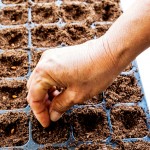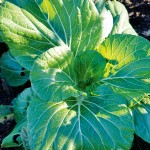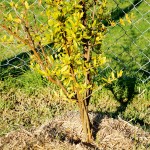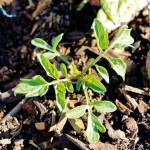Spring fever grips gardeners and non-gardeners alike with the urge to nurture the soil and grow plants
Vegetables
COOL & TEMPERATE
After a long, cold winter it’s reassuring to see new shoots appearing. The appearance of the first asparagus shoots in the vegetable garden is an exciting moment. Harvest them daily, as the spears quickly become tall and woody. Not so welcome are weed seedlings, which are also appearing now. Keep weeds under control around existing and new plantings by regularly hoeing the soil; also spread mulch to deter weed growth. Sow summer crops including chilli, capsicum, tomato, eggplant, cucumber, pumpkin, squash, zucchini and beans. Also plant lettuce and herbs, including basil, parsley and coriander. Potatoes, beetroot and carrot can be planted now in all areas. When planting potatoes, use certified disease-free seed potatoes (tubers). In areas that are still cold and where frosts are likely, hold off planting warm-season crops. Instead, sow broad beans, broccoli, English spinach and rocket.
TROPICAL
As the high humidity returns, switch to planting vegies that tolerate increased rain and humidity, including all sorts of beans, cucumbers and Chinese greens. Choose cherry tomatoes instead of larger-fruiting varieties as these are more pest- and disease-resistant. Cherry tomato seedlings may also be appearing self-sown in the garden at this time. Cherry tomatoes have a sprawling habit, so staking them or training them on a trellis will help manage them in the garden. Cherry tomatoes are prolific, too, so pick fruit frequently. To keep herbs growing well as the humidity rises, grow them in terracotta pots filled with free-draining potting mix. Shelter them from excessive rain by keeping them on a covered but brightly lit verandah. Shade leafy vegies to reduce foliage burn and water loss.
Fruit
COOL & TEMPERATE
Fast action is needed in early September as this is the last chance this year to control peach leaf curl. This disease, which affects leaves on peaches, nectarines and apricots and can reduce crops, must be prevented before the new leaves emerge by applying fungicide to the swelling buds. Apply copper spray in late winter or very early spring. If trees are already in leaf, it’s too late to spray as the copper can burn foliage. As the disease progresses, infected leaves become distorted, red or pink and swollen and then drop. Feed and water any affected trees well during spring to encourage a healthy crop of new leaves as the tree replaces lost foliage. Also finish planting bare-rooted deciduous fruit plants. If space isn’t available in the garden, temporarily pot them up into large containers with good-quality potting mix until a permanent home is ready. Prune and feed overgrown passionfruit vines. Also feed citrus, as the fruit sets, and avocado trees.
TROPICAL
In hot areas, fruiting trees such as citrus and lychees appreciate light shade, especially as they establish. The overhanging branches of fruiting trees also provide light shade for vegie crops that are stressed by full sun. If birds and insects regularly destroy fruit crops, grow fruiting trees and shrubs in a large, netted area. Spring is a good time to start a crop of rosellas. These small shrubs produce red hibiscus-like flowers that are used for making jams or preserves. They can be grown from seed or seedlings. Feed citrus with complete organic citrus food.
Compost & soil
COOL & TEMPERATE
Many vegetable beds have been resting through winter. These beds can be dug over now to ready them for spring planting. Dig in green manure crops that have been growing over winter; this adds natural nourishment to the soil. Also dig over the compost heap. Turning the compost as it decomposes helps to kick-start the composting process, adding oxygen to the rotting-down material. Digging in a few spades of manure such as the litter from the chook shed helps to reinvigorate the compost heap after winter. If the heap is cold and not breaking down material quickly, cover it with cardboard or matting to help it warm up.
TROPICAL
Where soil drainage is poor during the long, wet summer, make raised rows or beds, especially in the vegie patch, to assist soil drainage and reduce root-rot diseases. Spread compost under fruiting trees and renew mulches to protect soils and reduce weeds. Chop up prunings, including fallen palm fronds and other leafy material, to spread as mulch around trees and shrubs. Mulches can also be used to surface pathways.
By Jennifer Stackhouse
Originally from Good Organic Gardening magazine, Volume 5 Issue 5












